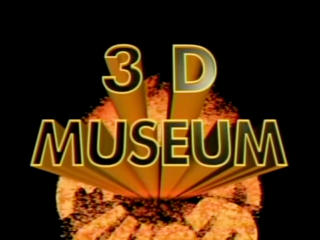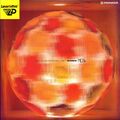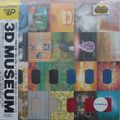3D Museum
From Sega Retro
| 3D Museum | |||||||||||||||
|---|---|---|---|---|---|---|---|---|---|---|---|---|---|---|---|
| System(s): Sega Mega LD | |||||||||||||||
| Publisher: Pioneer Electronic Corp. | |||||||||||||||
| Developer: Multimedia Creators Network[1] | |||||||||||||||
| Licensor: Studio Garage[1] | |||||||||||||||
| Sound driver: RSS[2][1] | |||||||||||||||
| Peripherals supported: 3D Goggle[2][1] | |||||||||||||||
| Genre: Electronic Publishing[2] | |||||||||||||||
| Number of players: 1 | |||||||||||||||
|
This short article is in need of work. You can help Sega Retro by adding to it.
3D Museum is a Sega Mega LD three-dimensional graphics collection developed by Multimedia Creators Network and published by Pioneer Electronic Corp. Released in Japan in February 1994, and in the United States later that same year, the collection is intended for use with Pioneer's 3D Goggle headset, and consists of psychedelic computer-generated graphics and abstract art.
History
Development
As executive producer Hiroyuki Nakano wished to have three-dimensional sound accompany the collection's three-dimensional visuals, Multimedia Creators Network founder Jotaro Nonaka became one of the first professional clients of Roland Corporation's RSS spatial audio technology.[3]
| “ | Nakano came up with the idea for making a title using 3D capabilities of LD-ROM, packed with all sorts of 3D method, and it became “3D Museum”. People at Pioneer who were in charge of LD-ROM format was planning to push 3D viewing with LaserActive, and they were planning to debut the machine equipped with LCD goggles from the beginning. Naturally, they needed something to show off what the machine can do in 3D, and Nakano basically realized what they needed the most.
And like myself, he decided to make his own video production studio, right next to my garden studio, which was named Studio 629. We were going back and forth between our studios, I deliver my audio tapes to him in next door, and he came back with a video master he edited, and vice versa. Since “3D Museum” had so many different clips literally packed from rim to rim of the disk, I had to come up with all different types of music and SE to accommodate, additionally, I wanted to make the sound synced with 3D images, we tried whatever the latest equipment and software available to process and control the audio in 3 dimension, but I ended up using “RSS” developed by Roland, and I recall I was one of their first real client, who actually purchased the entire package and installed in a professional recording studio. |
„ |
— Multimedia Creators Network founder Jotaro Nonaka[3] | ||
Magazine articles
- Main article: 3D Museum/Magazine articles.
Physical scans
References
NEC Retro has more information related to 3D Museum
|
- ↑ 1.0 1.1 1.2 1.3 1.4 1.5 File:LaserActive UFOET JP VHS promo.mp4
- ↑ 2.0 2.1 2.2 LA Express, "Vol. 14" (JP; 1996-02), page 4
- ↑ 3.0 3.1 https://laseractive.wordpress.com/interviews/ (Wayback Machine: 2020-11-11 21:40)
| 3D Museum | |
|---|---|
|
Main page | Magazine articles | Promotional material | |






